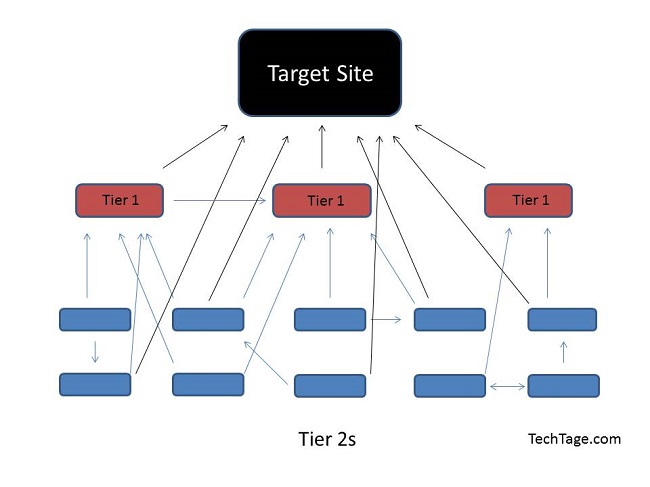What You Need to Know About Second-Tier Link Building
Ranking high in SERPs is a key goal of virtually all digital marketers and website managers. However, there are many reasons your site may not be performing as strongly as you wish on this front. Even if it is, you don’t want unexpected penalties to significantly impact your traffic if your pages begin ranking poorly in the future.
That’s why it’s important to funnel traffic to your site via multiple sources and methods. A second-tier link building strategy is one particular method worth focusing on. This brief guide will explain what tiered link building is, and how you can implement it to more effectively achieve your goals.
Understanding Second-Tier Link Building
Generating backlinks remains one of the most vital elements of an SEO strategy. When other high-authority domains link to pages on your site, search engines will be more likely to prioritize those pages in relevant SERPs. Of course, numerous backlinks also help to direct more traffic to your site. This is the essence of tiered link building.
Second-tier link building is slightly different, but still very important. It involves funneling traffic to your site by promoting other pages that link to yours. An example would be using your social media accounts to promote an article from an external source that links to your site.
The following image illustrates the concept of tiers visually. Your target site is the final destination you want guests to reach. The Tier 1 level represents other content that links to your site, and again, the Tier 2 level represents links to Tier 1, such as social media posts or email links:
That’s just one example. However, you may have some questions. How do I generate high-quality backlinks to my site? How do I find other sites that link to mine? What other methods can I use to promote them?
The following tips will help you better understand how to develop a second-tier link building strategy. That said, the most crucial tactic is always to focus on creating the strongest content you possibly can. Others are simply more likely to link to your site if the content across your pages is valuable.
Generate Backlinks Through Guest Blogging
You shouldn’t be passive when implementing your second-tier link building strategy. Don’t merely assume others will link to you naturally. Taking a proactive approach is key to your success.
That means reaching out to the owners of other sites to pitch guest blogs. For instance, perhaps you run a consulting agency for startups. The types of clients and readers you want to attract might also be the type of people who read publications such as Forbes or Entrepreneur. Contacting the appropriate editors at those sites and pitching story ideas (be sure to thoroughly explain why you’re an authority in this particular subject area when you do) gives you an opportunity to promote your own site. Very often, editors will allow guest bloggers to link back to their own sites either within the content they write, or in a brief “About the Author” section at the end.
This tactic helps you generate backlinks on sites that already have substantial traffic. Once you’ve posted such content, you can share it accordingly. Remember, the first tier is the content which directly links to your site. The second tier is a link to that content. While potential visitors will have to take an additional step to reach the page you want to direct them to, sharing these second tier links is still essential.
Consider Partnerships
Guest blogging isn’t the only way to generate backlinks. You can also reach out to the owners of other relevant sites to partner up. Entering into an official agreement, in which you both agree to link to one another’s pages in your content, is another simple but effective tactic to consider. Just make sure you’re being true to your end of the bargain. Such partnerships only work if both parties actively link to each other’s sites.
However, you need to be careful with this strategy. A recent study by Ahrefs has concluded that many high-performing sites do engage in reciprocal linking, but the study’s authors admit this could be an example of survivorship bias. Google may penalize you for reciprocal linking if, when your partner links back to your site, they don’t do so for any legitimate reason other than to fulfill the terms of your partnership. Links always need to naturally provide value to a reader. If they are included simply to boost traffic, they’ll do more harm than good.
That’s why you need to thoroughly discuss your reciprocal linking strategy if you decide to work with a partner. Make sure they understand how important it is to only link to your site when it genuinely makes sense to do so.
Finding Backlinks to Your Site
Generating backlinks through guest blogging should be a component of your strategy. However, you also want to find existing backlinks to ensure you have a thorough list of all pages that could be used for second-tier link building.
Ahrefs offers a tool that serves this exact purpose. It allows you to find the number of backlinks and referring domains that currently exist for any given page, as shown below:
The tool also allows users to identify the specific pages that link to theirs:
That’s very important. Simply knowing how many other sites are linking to your own isn’t enough. In order to promote those sites, you need to know exactly what and where they are.
It’s also worth noting that Ahrefs tool helps you learn which of your pages are linked to most often:
Taking advantage of this knowledge is another smart component of an overall SEO strategy. If a page is being linked to fairly often, it likely means the content on that page is strong, and should thus serve as a reference when you develop other content in the future.
These are premium features. You will have to pay to use the tool to its full potential. However, the benefit to your SEO strategy may be worth the investment.
Promote Backlinking Pages Actively
Social media is very useful as a means of sharing pages that link to yours. That said, it’s not the only channel worth using. Do you also have an email list? If so, you might share an interesting article with your followers that happens to link back to a page on your site. This allows you to provide them with genuinely valuable content.
In recent years, it’s become apparent that social media followers and email list subscribers don’t want brands to be overly promotional when sharing content. Promoting valuable content that link to yours is a smart way to make the right impression, while still funneling traffic back to you.
As always, you also need to monitor your performance. A tiered link building strategy can be a very useful element of a general SEO strategy. By keeping these tips in mind, and paying attention to which tactics deliver results, you’ll leverage it to its full potential.







